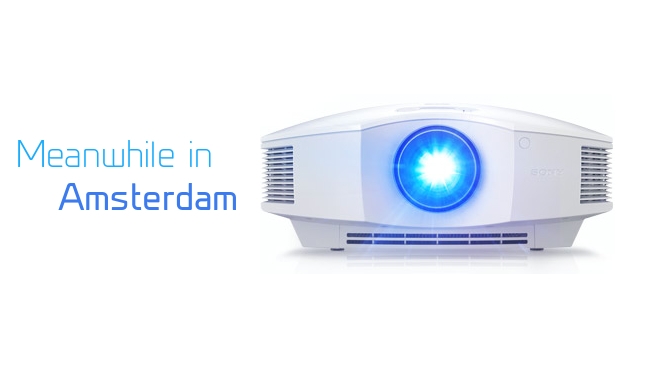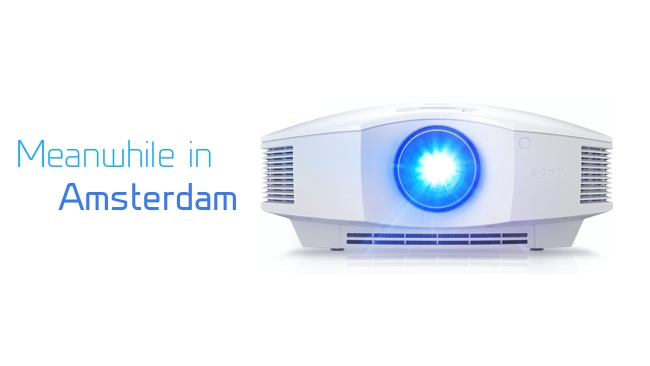
 Meanwhile in Amsterdam
Meanwhile in Amsterdam
CES inevitably grabs a lot of the headlines at the start of the year, but one of the other shows always worth keeping an eye on is ISE in Amsterdam at the end of January, which turns its attention to digital signage, smart buildings, and being able to fill your bath via your smartphone
At the extreme, Russian oligarch scale of things, the show is quite something: waterproof glass speakers for your shower, home cinema seats with massage functions and integral drink chillers and so on. For the world the rest of us inhabit, though, ISE (it stands for Integrated Systems Europe) also benchmarks several interesting areas.
Signage o' the times
The first of these is Digital Signage, where the European market alone is valued anywhere between €1-€2bn. Here, not only are screens becoming larger and thinner, with backlit LEDs slowly establishing hegemony, but the systems controlling them are also becoming more intelligent. This is enabling the higher-end systems and networks to evolve way beyond displaying simple loops of content, and start tying into Asset Management Systems and databases to reflect anything from current stock levels to location demographics, time of day, other components of a company's marketing strategy, and so on.
It's not quite Bladerunner yet, but all this is designed to essentially sell you more stuff and interactivity with the consumer is growing. Touch and viewer analytics are already well established metrics, and other types of interaction, such as trigger-based content and gesture control, are in the pipeline, though even the evangelists for all this sort of thing don't really see it coming to the fore for another five to ten years.
The damping effect of legislation
One of the reasons for that is legislative. Wander round the halls of ISE and you come across some very clever stuff - speakers that 'throw' sound to a narrow cone that make it sound like someone is going 'Psssttt...' in your ear – which is fun at a tradeshow but possibly a lawsuit waiting to happen in a busy mall. And Castrol's stunt of using number-plate recognition a few years ago to recommend different types of oil to motorists based on what car they owned via a digital billboard rebounded spectacularly when it caused a huge privacy fuss about the ethics of government departments selling such data to private companies.
Elsewhere, physical edge blending techniques mean that videowalls can now routinely have invisible bezels, the sector is ramping up nicely for 4k display, and screens that can cope with multiple touches from multiple actors simultaneously are becoming increasingly standard.
Solid state projection
Meanwhile, projectors seem to be gradually moving away from their reliance on lamps, which will be a delight to owners that are forever having to foot the bill to replace and dispose of them according to environmental regs, not to mention foot the energy costs of powering them.
At the low end, say under 1000 lumens, pure LED is an increasingly popular choice, while for the next step up (2000-3000 lumens) laser takes over. This though is typically a slightly hybrid solution that uses phosphors to replicate the green part of the RGB spectrum due to the expense of green lasers.
At the top end, the cinema projector specialists have even got pure laser projectors driving over 60,000 lumens in experimental units. This is where there is an awful lot of activity is taking place, as laser projectors don’t need the filters, beam splitters and mirrors that a Xenon lamp requires before its photons even hit a DLP block in a standard digital projector.
The problem at the moment though is high initial cost, with not enough take-up as yet to start driving the price down. There is also the odd regulatory difficulty here as well, with a laser projector over 5000 lumens requiring a firearms license in several countries. Their advantages though are so numerous – lower cost of ownership, higher contrast, greater colour gamut, less optical complexity etc etc – that it really is only a matter of time.
Buildings turn smarter and cheaper
One of the other interesting trends to note from the pre-ISE build-up is that manufacturers of the smart building products and systems – not just the mad stuff, but also systems to control energy costs, pipe AV into any room etc – seem to be following the available income trail down towards the middle market.
A lot of this is due to the ubiquity of connecting devices to networks and providing everything with an IP address, which has happily ridden roughshod over any number of expensive, proprietary protocols. Add in a handy control surface – ie a tablet computer – and you have simple technology that takes smart buildings out of the hands of the specialist install market and into the realms of the average geek. Indeed, it has been predicted that within five years the typical connected house will have anywhere between 60 and 100 devices sitting on its network.
So, when your window blinds fail to draw or open to conserve energy at the appropriate time, you can always make the joke about Windows crashing again...
Tags: Technology


Comments